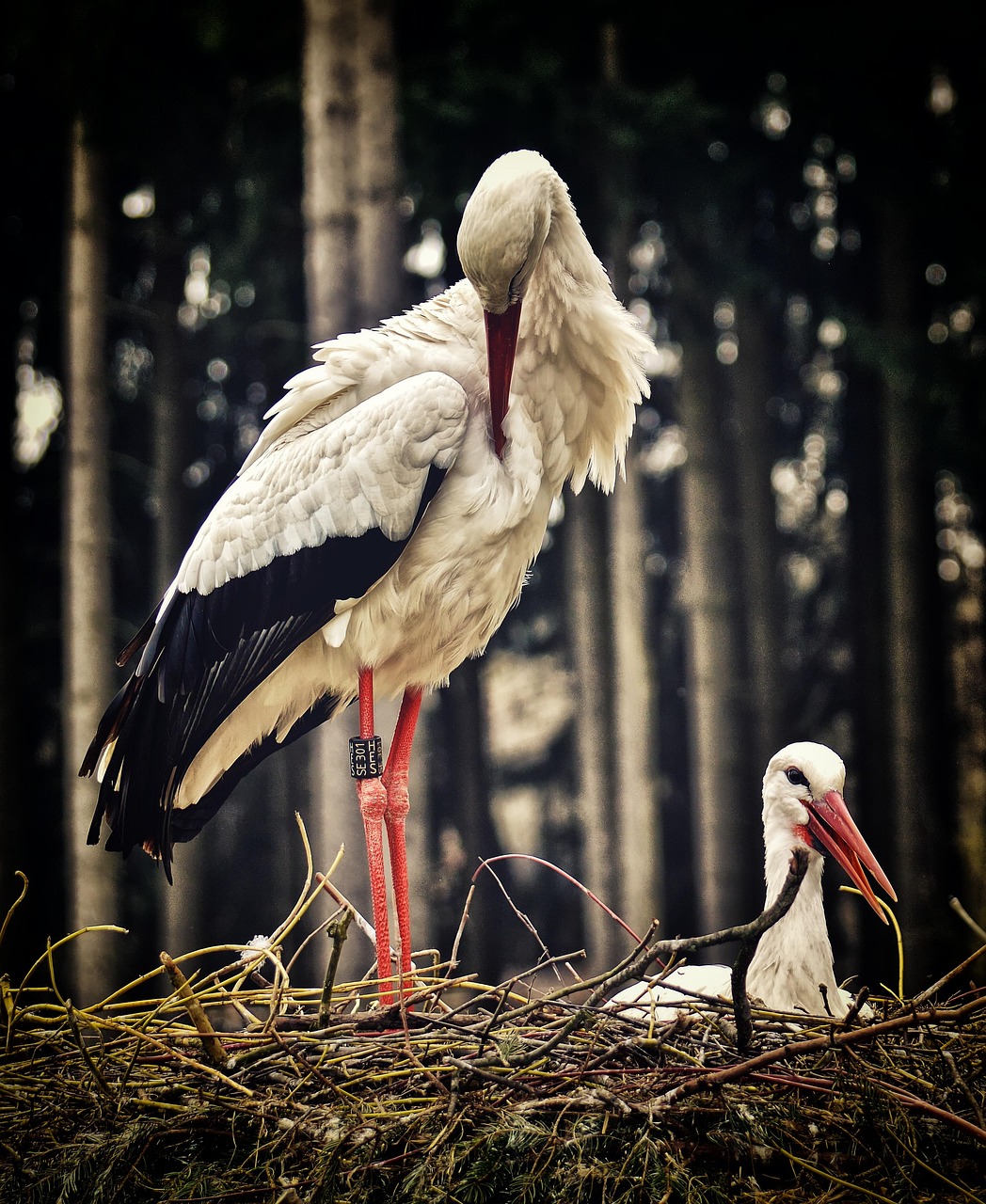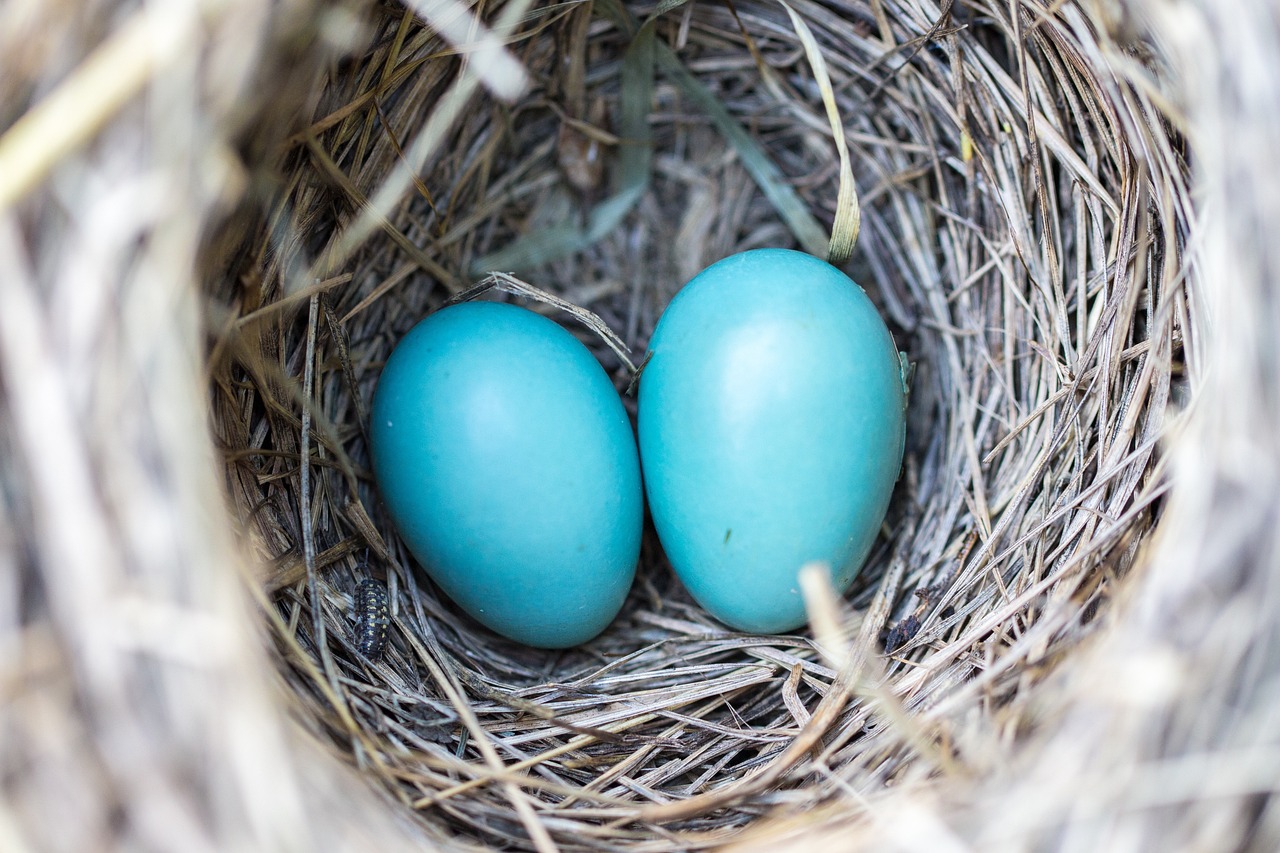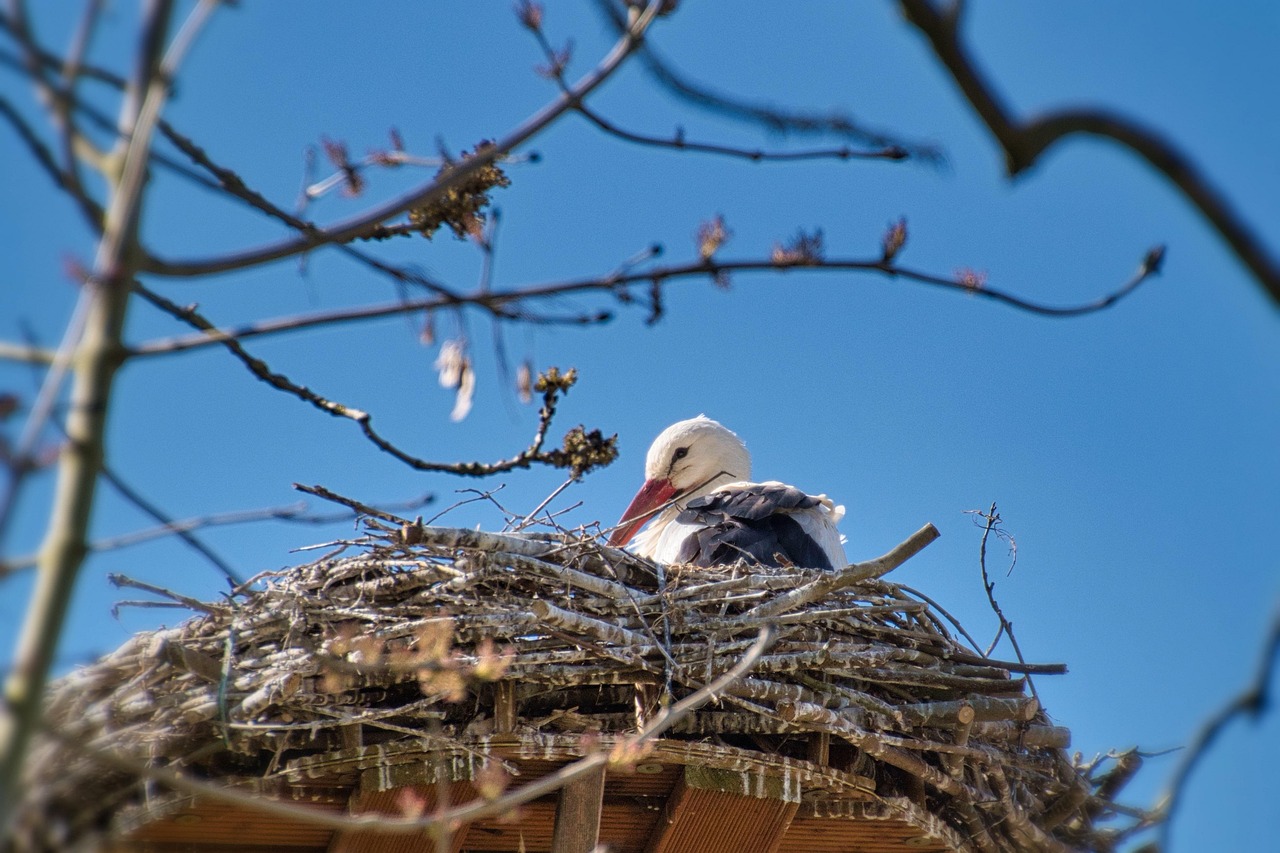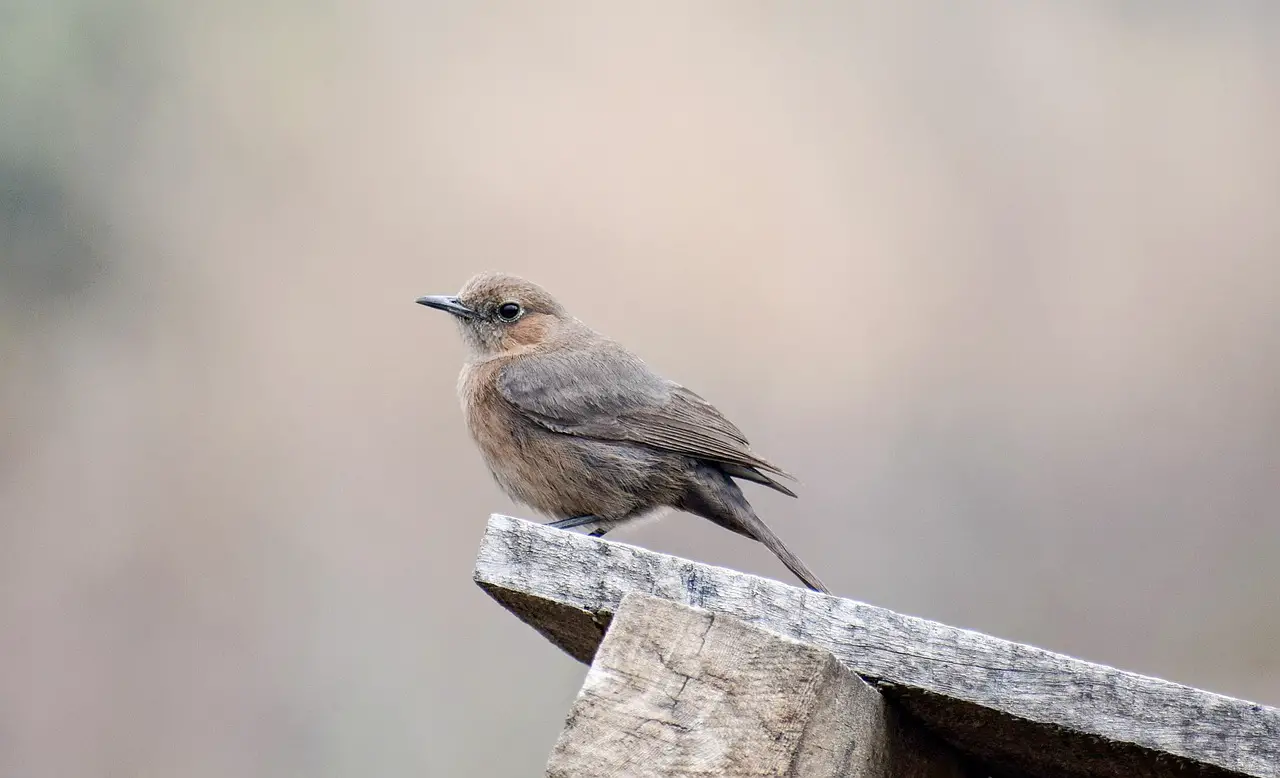Wrens are known for their intricate nesting habits, often building their nests in hidden locations such as dense shrubs, tree cavities, or man-made structures. They typically use twigs, grass, feathers, and other natural materials to create cozy, well-insulated homes for their eggs and young.
Wrens belong to the family Troglodytidae and are small, energetic birds that are found in various habitats across North America and beyond. Their nesting habits are fascinating and reflect their adaptability to different environments. These birds are known for their resourcefulness when it comes to constructing nests, often utilizing whatever materials are available in their surroundings. This adaptability not only helps them thrive in different habitats but also ensures the safety and comfort of their offspring.
Each species of wren has its own unique preferences when it comes to nesting sites. Some wrens prefer to build their nests in dense vegetation, which provides protection from predators. Others may choose more open areas, depending on the availability of materials and suitable locations. The choice of location is crucial for the survival of the chicks once they hatch.
Nesting Sites and Preferences

Wrens exhibit a variety of nesting preferences based on their specific species and local environment. The following are common nesting sites chosen by wrens:
- Dense shrubs or bushes
- Tree cavities
- Woodpecker holes
- Human-made structures such as birdhouses or eaves of buildings
- Abandoned nests of other birds
These birds often seek out locations that provide both shelter and concealment. The choice of nesting site is influenced by factors such as the availability of food, presence of predators, and weather conditions. For instance, a wren may favor a location that is sheltered from harsh winds or heavy rain.
Materials Used in Nest Building
Wrens are skilled architects when it comes to nest construction. They gather various materials to create a safe and comfortable environment for their eggs. Some common materials used include:
- Twigs and branches
- Dry grasses and leaves
- Feathers for insulation
- String, paper, and other human-made items
- Moss and lichen for added camouflage
The combination of these materials not only provides structural integrity but also offers warmth and protection. The inner lining of the nest is often made softer with feathers and other fine materials to ensure a cozy environment for the chicks.
Nesting Behavior
Wrens typically engage in interesting behaviors while building their nests. Males are primarily responsible for finding suitable locations and gathering materials. They may build several incomplete nests within their territory to attract females. Once a female selects a nest, she will complete it by adding her preferred materials.
The construction process can be quite rapid. Depending on the species and availability of materials, a wren may complete a nest in just a few days. Once the nest is completed, the female lays between three to eight eggs, which she incubates for about two weeks before they hatch.
| Species | Nesting Location | Typical Nest Materials |
|---|---|---|
| House Wren | Cavities, birdhouses | Twigs, grasses, feathers |
| Carolina Wren | Dense shrubbery, tree cavities | Leaves, moss, feathers |
This nesting behavior not only highlights the adaptability of wrens but also showcases their ability to thrive in various environments. Their nesting habits play a crucial role in ensuring the survival of their young as they prepare for life outside the nest.
Nesting Timeline and Behavioral Patterns
The nesting timeline of wrens is an important aspect of their reproductive behavior. Understanding their breeding cycles can provide insight into their nesting habits and how they care for their young. The timeline typically consists of several key stages, from courtship to fledging.
Breeding Season
Wrens usually begin their breeding season in the spring, as temperatures rise and food becomes more abundant. This timing allows them to take advantage of the plentiful resources available for feeding themselves and their chicks. The exact timing may vary by species and geographical location, but generally, the following stages can be observed:
- Courtship: Males establish territories and engage in singing to attract females.
- Nest Building: Males construct multiple nests to entice a female to choose one.
- Egg Laying: After selection, females lay eggs, typically ranging from three to eight.
- Incubation: The female incubates the eggs for about 12 to 16 days.
- Fledging: Chicks leave the nest approximately 12 to 19 days after hatching.
This timeline highlights the critical phases of wren nesting behavior. Each stage has specific tasks that the birds must complete to ensure the survival of their young. Understanding these phases can also help birdwatchers identify and appreciate the nuances of wren behavior.
Parental Care
After the eggs hatch, both parents play a significant role in caring for the chicks. The male’s role often includes defending the territory and providing food, while the female focuses on feeding and keeping the chicks warm. Their cooperative parenting style is essential for the survival of the young birds. Key aspects of parental care include:
- Feeding: Both parents actively search for insects, spiders, and other food sources to feed their chicks.
- Protection: Parents are vigilant against predators and will often distract them away from the nest.
- Cleansing: Adult wrens remove fecal sacs from the nest to maintain hygiene and reduce scents that could attract predators.
This shared responsibility enhances the chances of survival for the chicks, ensuring they receive adequate nutrition and protection during their vulnerable early days.
Nest Variations Across Species
Different species of wrens exhibit variations in their nesting styles and preferences. These differences can be attributed to environmental factors and evolutionary adaptations. Here are a few notable variations:
House Wren
The House Wren is known for its adaptability in nesting locations. This species often chooses human-made structures, such as birdhouses or garden sheds, as suitable nesting sites. Their nests are typically made from a variety of materials, giving them a unique appearance.
Winter Wren
The Winter Wren prefers dense, moist habitats such as swamps or thick underbrush. Their nests are often built low to the ground, camouflaged by vegetation, which helps protect them from predators. The structure of their nests tends to be more elaborate compared to other species.
Carolina Wren
The Carolina Wren is characterized by its bold personality and preference for nesting in sheltered areas like tree cavities or dense shrubs. This species is particularly resourceful, often incorporating human-made materials into its nest construction.
| Wren Species | Nest Location | Nest Characteristics |
|---|---|---|
| House Wren | Human structures, cavities | Varied materials, often messy |
| Winter Wren | Dense underbrush, swamps | Elaborate, hidden |
| Carolina Wren | Shrubs, tree cavities | Incorporates human items |
These variations illustrate how different species have adapted their nesting habits according to their environments. This adaptability is a key factor in
Impact of Environment on Nesting Habits


The environment plays a crucial role in shaping the nesting habits of wrens. Factors such as habitat type, climate, and availability of materials directly influence where and how these birds build their nests. Understanding these environmental impacts can provide deeper insights into wren behavior and their ecological adaptations.
Habitat Types
Wrens thrive in a variety of habitats, which significantly affects their nesting preferences. Here are some common habitats where wrens are found and how they influence nesting:
- Woodlands: Wrens in wooded areas often prefer to build nests in tree cavities or dense shrubs, providing natural shelter.
- Grasslands: In open fields, wrens may nest in tall grasses or among brush piles, utilizing the surrounding vegetation for cover.
- Urban Areas: Wrens have adapted to human environments, often nesting in gardens, birdhouses, or even eaves of buildings, showcasing their versatility.
- Wetlands: Species like the Winter Wren favor moist, dense vegetation where they can build intricate nests hidden from predators.
The choice of habitat is essential not only for nesting but also for foraging and raising young. Each habitat presents unique challenges and advantages that wrens have learned to navigate successfully.
Climate Considerations
The climate of a region can also dictate the nesting behaviors of wrens. Variations in temperature, rainfall, and seasonal changes impact their nesting cycles:
- Temperature: In warmer climates, wrens may breed earlier in the year when resources become available sooner. In contrast, those in colder regions may delay breeding until spring.
- Rainfall: Areas with consistent rainfall provide ample food sources, which can lead to higher reproductive success. However, excessive rain can also make nesting sites unsuitable.
- Seasonal Changes: Seasonal variations can lead to shifts in food availability. Wrens adjust their nesting timing to align with peak food sources for their chicks, ensuring better survival rates.
These climate considerations highlight the adaptability of wrens and their ability to respond to environmental changes effectively. Their nesting habits reflect a balance between survival needs and the conditions present in their habitats.
Threats to Nesting Success
Despite their adaptability, wrens face several threats that can impact their nesting success. Understanding these threats can help in conservation efforts and habitat management:
Predation
Predators are among the most significant threats to wren nests. Common predators include:
- Cats: Domestic cats pose a high risk to ground-nesting birds, including wrens.
- Raccoons: These opportunistic feeders often raid nests for eggs or chicks.
- Snakes: Snakes can access nests in low shrubs or cavities, posing a direct threat to young birds.
The presence of predators can lead to increased stress for parent wrens as they work to protect their young from potential harm.
Habitat Loss
Habitat destruction due to urbanization, agriculture, and deforestation significantly impacts wren populations. As natural habitats are altered or removed, wrens may struggle to find suitable nesting sites. The following factors contribute to habitat loss:
- Urban Development: The expansion of cities and towns reduces available natural spaces for nesting and foraging.
- Agricultural Practices: Intensive farming often leads to the destruction of hedgerows and other natural habitats that provide nesting opportunities.
- Climate Change: Changing climate conditions can alter the availability of suitable habitats over time.
Conservation efforts aimed at preserving and restoring natural habitats can play a significant role in maintaining healthy wren populations.
Human Interaction and Conservation Efforts

Human activity has a profound effect on wren nesting habits. While some interactions can be detrimental, there are also positive steps that individuals can take to support wren populations.
Nesting Boxes
Providing artificial nesting boxes can significantly benefit wrens, especially in urban areas where natural cavities are limited. Here are some tips for creating effective nesting boxes:
- Placement: Install boxes in quiet areas away from heavy human activity and near natural vegetation.
- Design: Ensure that boxes have appropriate entry holes and drainage to keep them dry and safe from predators.
- Maintenance: Regularly clean out old nests after the breeding season to encourage new occupants the following year.
By implementing these measures, people can create environments that support local wren populations while enjoying the beauty of these lively birds.
Challenges and Opportunities for Wren Conservation
As we continue to explore the world of wrens, it is important to recognize both the challenges they face and the opportunities for conservation. The delicate balance between human development and wildlife preservation has never been more crucial. Wrens, like many other species, are affected by various environmental changes, making their protection a pressing issue.
Community Engagement
One of the most effective ways to support wren populations is through community engagement and education. Here are several strategies communities can adopt:
- Educational Programs: Schools and local organizations can host workshops that teach the importance of birds in ecosystems, focusing on how individuals can help wrens and other species.
- Citizen Science Projects: Encouraging community members to participate in bird counts or habitat assessments can foster a deeper connection between people and local wildlife.
- Neighborhood Initiatives: Local groups can organize clean-up days, native plant drives, or planting sessions to create bird-friendly environments.
By fostering a sense of community responsibility towards wildlife, individuals can contribute to the creation of safer habitats for wrens and other birds.
Research and Monitoring
Scientific research plays a vital role in understanding wren nesting habits and overall population dynamics. Ongoing studies can provide valuable insights into:
- Population Trends: Monitoring wren populations can help identify declines or increases, allowing for targeted conservation efforts.
- Nesting Success Rates: Researching which factors most influence nesting success helps inform habitat management practices.
- Behavioral Studies: Understanding wren behavior in different environments can lead to improved nesting box designs and habitat enhancements.
Collaboration between researchers, conservationists, and local communities can lead to more effective strategies for preserving wren populations.
Final Thoughts
Wrens are remarkable birds that showcase incredible adaptability and resilience in the face of environmental challenges. Their nesting habits, unique behaviors, and interactions with their surroundings demonstrate the complexity of avian life. By understanding the factors that influence their nesting success—from habitat choices to parental care—we gain a greater appreciation for these captivating creatures.
The importance of human involvement in conservation efforts cannot be overstated. Through community engagement, education, and research, we can create an environment that supports not only wrens but a diverse range of wildlife. Simple actions, such as installing nesting boxes and preserving natural habitats, can significantly impact local ecosystems.
The future of wrens relies on our commitment to understanding and protecting their habitats. As we continue to learn more about these small yet significant birds, let us take proactive steps toward ensuring their survival for future generations. By fostering a harmonious relationship with nature, we can enjoy the beauty of wrens and contribute to the richness of our shared ecosystems.
In summary, wrens are not just birds; they are vital components of our natural world. Their nesting habits offer insights into ecological health and biodiversity. By working together to protect them, we can ensure that they continue to thrive in our backyards and beyond.
